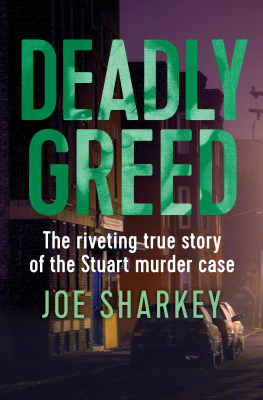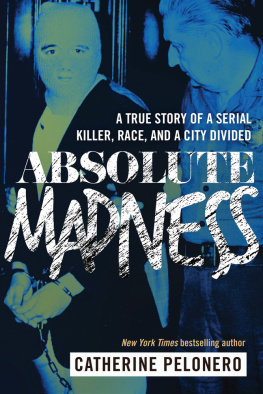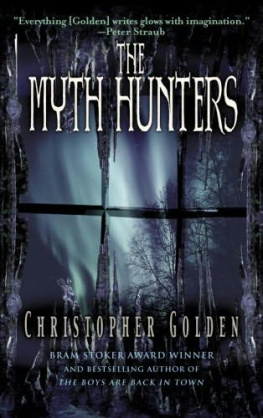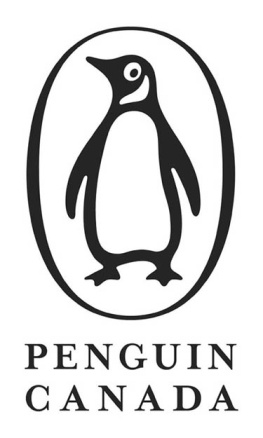John Vaillant - The Golden Spruce: A True Story of Myth, Madness, and Greed
Here you can read online John Vaillant - The Golden Spruce: A True Story of Myth, Madness, and Greed full text of the book (entire story) in english for free. Download pdf and epub, get meaning, cover and reviews about this ebook. year: 2006, publisher: Vintage Canada, genre: Non-fiction. Description of the work, (preface) as well as reviews are available. Best literature library LitArk.com created for fans of good reading and offers a wide selection of genres:
Romance novel
Science fiction
Adventure
Detective
Science
History
Home and family
Prose
Art
Politics
Computer
Non-fiction
Religion
Business
Children
Humor
Choose a favorite category and find really read worthwhile books. Enjoy immersion in the world of imagination, feel the emotions of the characters or learn something new for yourself, make an fascinating discovery.

- Book:The Golden Spruce: A True Story of Myth, Madness, and Greed
- Author:
- Publisher:Vintage Canada
- Genre:
- Year:2006
- Rating:4 / 5
- Favourites:Add to favourites
- Your mark:
- 80
- 1
- 2
- 3
- 4
- 5
The Golden Spruce: A True Story of Myth, Madness, and Greed: summary, description and annotation
We offer to read an annotation, description, summary or preface (depends on what the author of the book "The Golden Spruce: A True Story of Myth, Madness, and Greed" wrote himself). If you haven't found the necessary information about the book — write in the comments, we will try to find it.
The Golden Spruce: A True Story of Myth, Madness, and Greed — read online for free the complete book (whole text) full work
Below is the text of the book, divided by pages. System saving the place of the last page read, allows you to conveniently read the book "The Golden Spruce: A True Story of Myth, Madness, and Greed" online for free, without having to search again every time where you left off. Put a bookmark, and you can go to the page where you finished reading at any time.
Font size:
Interval:
Bookmark:
CONTENTS
for Nora
All Trees of noblest kind for sight, smell, taste;
And all amid them stood the Tree of Life,
High eminent, blooming Ambrosial Fruit
Of vegetable Gold; and next to Life
Our Death the Tree of Knowledge grew fast by,
Knowledge of good bought dear by knowing ill.
John Milton, PARADISE LOST
ACKNOWLEDGMENTS
T HIS BOOK WOULD NOT exist if not for hundreds of acts of generosity on the part of individuals who freely shared the fruits of their hard won knowledge and experience. I wish to express my particular gratitude to the Tsiij gitanee clan, especially Chief Donald Bell, Dorothy Bell, Lucille Bell, Robin Brown, and Leo Gagnon, for granting me permission to write about the story of the golden spruce. I am equally grateful to Cora Gray, and to those members of the Hadwin family who shared their memories and insights with me. I would also like to thank Guujaaw, the current President of the Council of the Haida Nation, for taking the time to speak with me on numerous occasions. Thanks, also, to Caroline Abrahams, Marilyn Baldwin, Perry Boyle, John Broadhead, Diane Brown, Neil Carey, Frank and Nika Collison, the late Ernie Collison, Betty Dalzell, Kiku Dhanwant and Gerry Morigeau, Bart DeFreitas and Carolynter Borg, Tom and Astrid Greene, Paul Harris-Jones, Marina Jones, Judy Kardosh, Ian Lordon, Bruce Macdonald, Nathalie Macfarlane, Neil McKay, Jack Miller, Irene Mills, Alex Palmer, Wesley Pearson, David Phillips, Dave Rennie, Raven Rorick, Hazel Simeon, Bill Stevens, Harry Tingley, Al and Gladys Vandal, Scott Walker, Al Wanderer, Ernie Wilson, Jennifer Wilson, and Elois Yaxley for sharing their thoughts, recollections, and excellent advice. Thanks to Archie Stocker for his video footage and photos, and to Todd Merrell, whose excellent documentary enhanced my understanding of the Haida worldview. I would also like to thank Steve Petrovcic for sharing his painstaking research, the Reverend Peter Hamel for permission to reprint his fine sermon, and the staff at the Observer and the Daily News, for their assistance with research.
Several people in the UBC Forestry Department were very helpful including John Worrall, Suzanne Simard, and Dennis Bendickson, who fielded a random phone call and connected me to Bill Weber, whose willingness to share his time and experience was not only way beyond the call of duty but gave me a much greater appreciation for, and understanding of, loggers and the logging industry. Many thanks also to a number of people at Weyerhaeuser, especially Erin Badesso, Bill Beese, Corey Delves, Gordon Eason, Earl Einarson, David Sheffield, and Donnie Zapp.
Corporal Gary Stroeder, Sergeants Ken Burton and Randall McPherron, and Constables Bruce Jeffrey (Ret.), John Rosario, and Blake Walkinshaw generously provided invaluable perspective on this story. Likewise, the personnel at the Coast Guard stations in Sitka, Ketchikan, Juneau, and Prince Rupert were unfailingly helpful, as were their counterparts at the Rescue Coordination Centre in Victoria. Thanks also to Grant Ainscough, Hal Beek, Paul Bernier, Pat Campbell, Don Carson, Grant Clark, Brian Fawcett, Robert Fincham, Pat Fricker, Tom Illidge, Dewey Jones, Ernie Kershaw, Dale Lore, Harry Lynum, Stewart Marshall, Luanne Palmer, Don Piggott, Gordon Pincock, Harry Purney, Gene Runtz, Grant Scott, Jim Trebett, Brian Tremblay, and many others, unnamed here, who have generously answered a raft of random questions.
Two superbly researched and very readable histories were crucial to my understanding of the logging and fur trade industries: Michael Williams Americans and Their Forests, and James Gibsons OtterSkins, Boston Ships and China Goods. Jon Luomas The Hidden Forest was a great introduction to the mysteries of the coastal forest. I am sorry to have missed the late poet, historian, and lifelong student of the northwest coast, Charles Lillard, who bears quoting here: To read means to borrow; to create out of ones reading is paying off ones debts.
I am indebted to Steven Acheson, Robert Bringhurst, Julie Cruikshank, Robert Deal, Ian Gill, Terry Glavin, Gary Greenberg, Ben Parfitt, Roy Taylor, John Worrall, and my father, George Vaillant, for reading portions of the manuscript and commenting on their form and accuracy. John Enrico provided generous assistance with Haida translation.
Dominic Ali, David Beers, Bruce Grierson, Ruth Jones, and Jennifer Williams have been good allies. Kim and Stephen, Bree and Michael, Rikia and Camthank you for helping to keep the ship afloat. Thanks also to Angelika Glover and Morgen Van Vorst for their help and energizing enthusiasm. Special thanks to my editor and advocate at The New Yorker, Jeffrey Frank, and to the superb editors of this book: Louise Dennys at Knopf Canada and Starling Lawrence at W. W. Norton. I am particularly grateful to my agent, Stuart Krichevsky, who saw the forest for the tree.
Finally, I must acknowledge my beloved wife, Nora, a tireless editor and a true alchemist, who transformed the act of writing a first book in the midst of an emerging family into an experience I would gladly, and joyfully, repeat.
PROLOGUE
Driftwood
S MALL THINGS ARE hard to find in Alaska, so when a marine biologist named Scott Walker stumbled across a wrecked kayak on an uninhabited island fifty kilometres north of the Canadian border, he considered himself lucky. The coastal boundary where Alaska and British Columbia meet and overlap is a jagged four-way seam that joins, not just a pair of vastand vastly differentcountries, but two equally large and divergent wildernesses. To the west is the gaping expanse of the North Pacific Ocean, and to the east is the infinity of mountains that forms the heart of what some in the Northwest call Cascadia. The coastline where these worlds meet and bleed into one another is sparsely inhabited and often obscured by fog, the mountains sheared off by low-lying clouds. At sea level, it is a long and convoluted network of deep fjords, narrow channels, and rock-bound islands. It is a world unto itself, separated from the rest of North America by the Coast Mountains, whose ragged peaks carry snow for most of the year. In some places their westward faces plunge into the sea so abruptly that a boat can be fifteen metres from shore and still have a hundred and fifty metres of water beneath her keel. The region is sporadically patrolled, being governed, for the most part, by seven-metre tides and processions of sub-Arctic storms that spiral down from the Gulf of Alaska to batter the long, tree-stubbled lip of the continent. Even on calm days, the coastline may be shrouded in a veil of mist as three thousand kilometres of uninterrupted Pacific swell pummels itself to vapour against the stubborn shore.
The combination of high winds, frequent fog, and tidal surges that can run over fifteen knots makes this coast a particularly lethal one, and when boats or planes or people go missing here, they are usually gone for good. If they are found, it is often by accident a long time later, and usually in a remote location like Edge Point where Scott Walker anchored his seventeen-foot skiff on a fair June afternoon in 1997 while doing a survey of the local salmon fishery. Edge Point is not so much a beach as an alpine boulder field that, at this point in geologic time, happens to be at sea level. It lies at the southern tip of Mary Island, a low hump of forest and stone that forms one side of a rocky, tide-scoured channel called Danger Passage; the nearest land is Danger Island, and neither place was idly named.
Like much of the Northwest Coast, Edge Point is strewn with driftwood logs and whole trees that may be a metre and a half in diameter and stacked twenty deep. Burnished to silver, this mass of wood, much of which has broken loose from log booms and transport barges, lies heaped as high as polar winds and Pacific waves can possibly throw it. Even if a man-made object should make it ashore here in one piece, it wont last long after it arrives; within the course of a few tide cycles, it will be hammered to pieces between the heaving logs and the immovable boulders beneath them. In the case of a fibreglass boatsuch as a kayakthe destruction is usually so complete that it makes the craft hard to recognize, much less find. When a fibreglass yacht was found in a location similar to Edge Point three years after it had disappeared without issuing a distress signal, the largest surviving piece was half a metre long and that was only because it had been blown up into the bushes; the rest of the sixty-foot sloop had been reduced to fragments the size of playing cards. This is why Scott Walker considered himself fortunate: he wasnt too late; parts of the kayak might still be salvageable.
Next pageFont size:
Interval:
Bookmark:
Similar books «The Golden Spruce: A True Story of Myth, Madness, and Greed»
Look at similar books to The Golden Spruce: A True Story of Myth, Madness, and Greed. We have selected literature similar in name and meaning in the hope of providing readers with more options to find new, interesting, not yet read works.
Discussion, reviews of the book The Golden Spruce: A True Story of Myth, Madness, and Greed and just readers' own opinions. Leave your comments, write what you think about the work, its meaning or the main characters. Specify what exactly you liked and what you didn't like, and why you think so.









